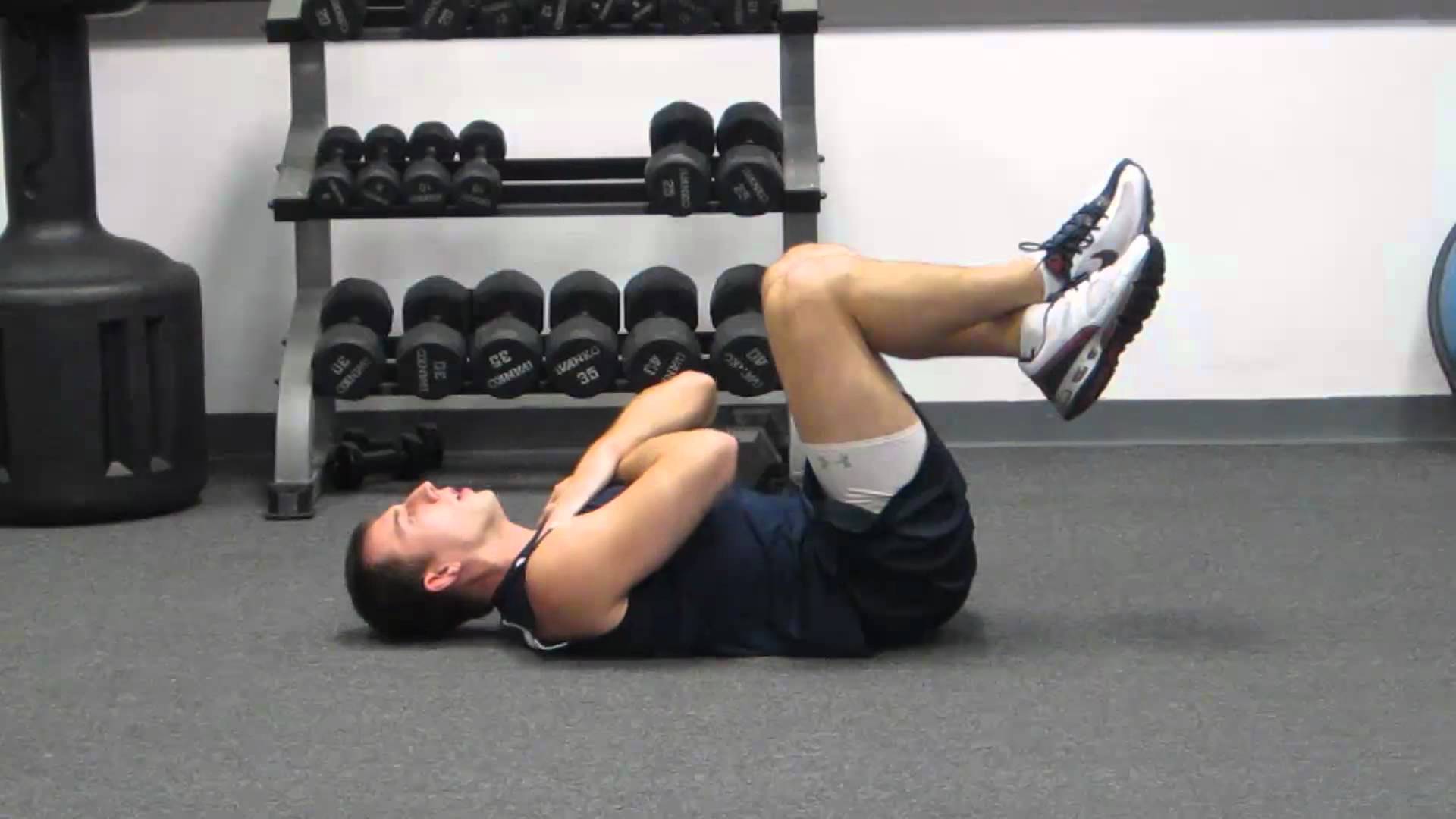
The stomach crunch is a highly effective exercise for stressing the muscles of the stomach, namely the rectus abdominis, and the internal and external oblique’s. The core muscles are extremely important for overall body function, with a strong core necessary for heavy over head exercises, as well as squatting, deadlifting, and rowing. The stomach crunch isolates the long, flat, rectus abdominis muscle very effectively. Let’s take a look at the exercise more closely, and its variations.
The crunch movement
For full instructions, please see the crunch exercise profile, found within our exercise directory.
The crunch places the body in a sound position for stomach contraction, whilst ensuring lower back support. The crunch has a more acute range of motion in comparison to the full sit-up, with the upper torso lifted off the floor to flex the trunk, whilst the lower back remains on the floor. This reduces the recruitment of the hip flexors (the rectus abdominis and the hip flexors cross at the hip joint), which can overpower the full sit-up exercise, taking away stress from the stomach muscles. The crunch isolates the rectus abdominis, and poses greater continual resistance.
Variations of the stomach crunch
Ball crunch
Using a gym ball allows the lower back to hyperextend to the contour of the ball, stretching the stomach muscles, and supplying support for the lower back.
The ball crunch is somewhat more dynamic compared to the floor crunch, with the movement of the ball requiring muscle contractions to aid balance and stability.
Cable crunch
This is the crunch movement performed in front of a high cable pulley whilst kneeling, using the above cable as resistance. The rope attachment would ideally be used, so the hands can be placed to both sides of the head (with some freedom of movement due to the rope), although the hands must not touch or be supported by the head. See the kneeling cable crunch profile for further information.
The cable crunch would be used for those who wish to use more resistance during the crunch exercise. Maybe those who seek muscle size would benefit from this crunch variation, using a moderate repetition range to induce muscle hypertrophy.
Assisted/Cradle crunch
Most gyms have a cradle for crunching, which allows the trainer to rest their head on a pad, and use the motion of the cradle to aid in the crunch movement. This would be a good choice for those relatively new to stomach crunches, with the exercise being of low resistance.
What are your intentions?
A final word on the stomach crunch. The exercise is great at stressing the rectus abdominis, and the oblique muscles. Stomach crunches, however, are not ideal for reducing stomach fat. Direct resistance exercises are limited in their ability to reduce body fat, and are more suited to stimulating the muscle groups in which they target. Those looking for a flatter stomach would be best looking at a fat loss plan which includes cardiovascular activity, and correct dietary intake.